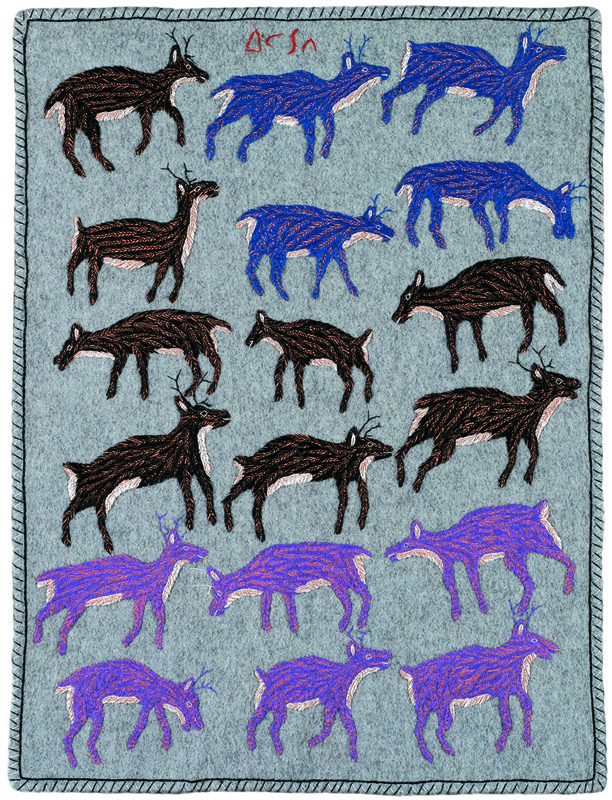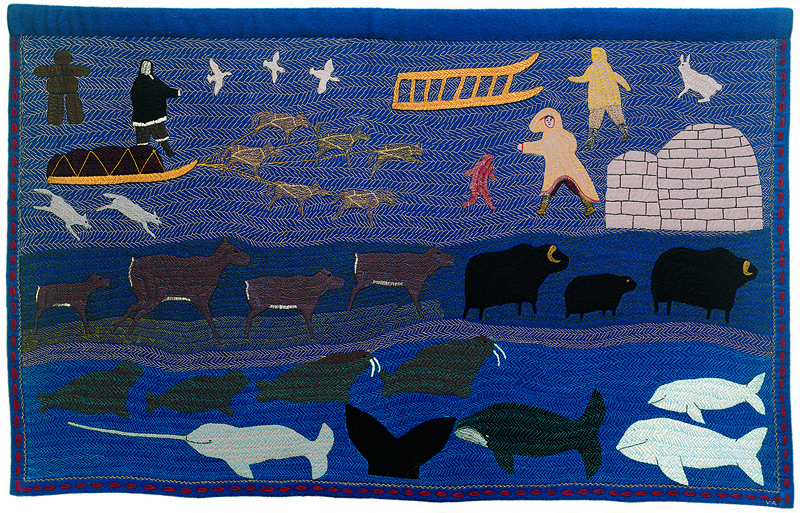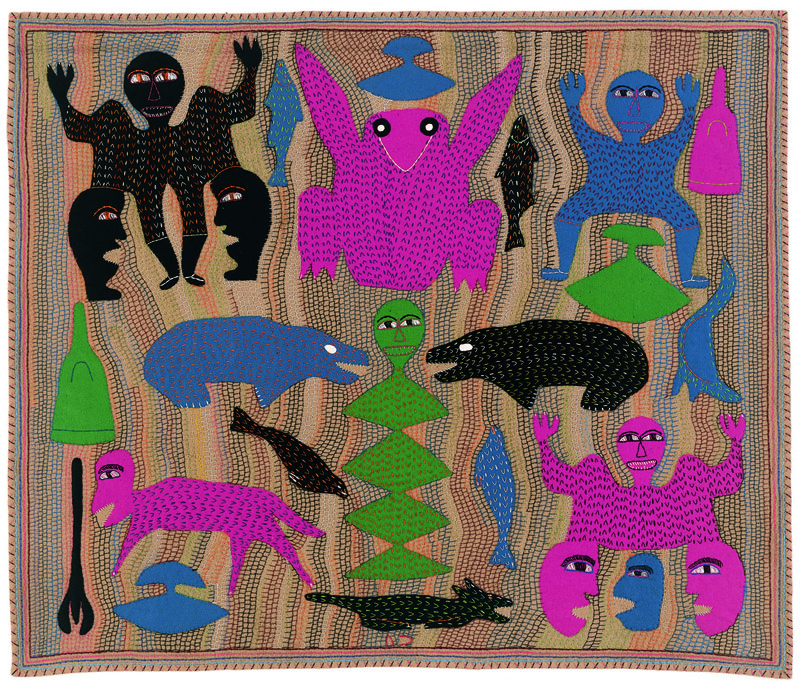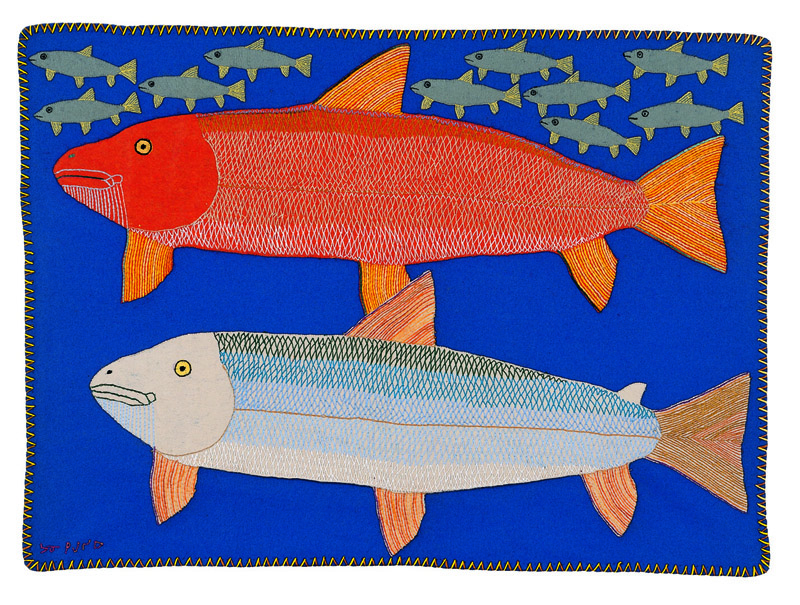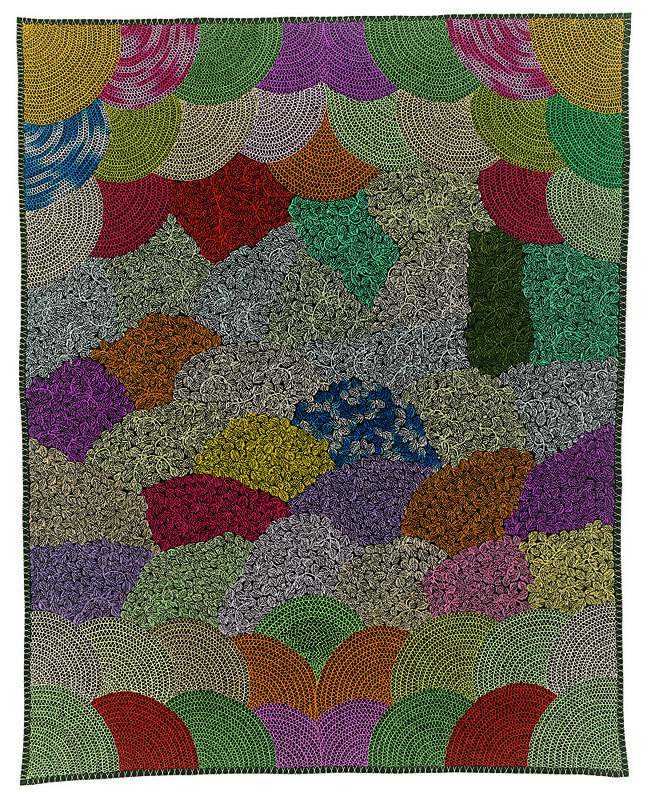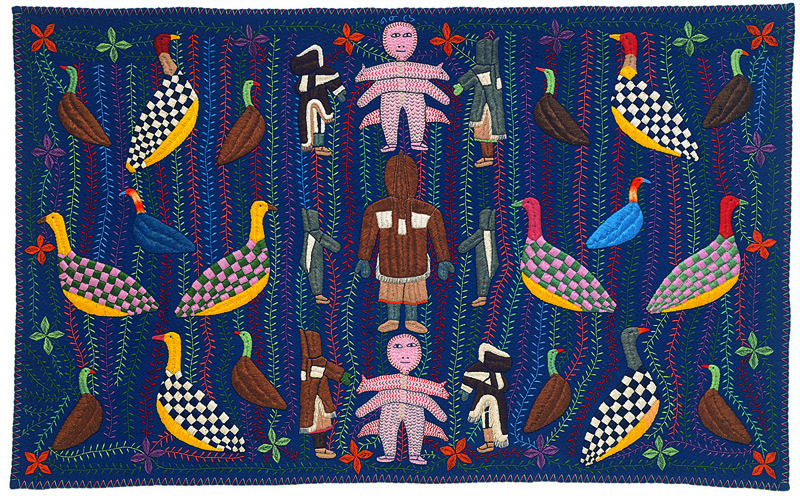Works on Cloth: Imagery by Artists of Baker Lake

This exhibition of wallhangings from Baker Lake – the first of its kind to be fully catalogued – brings together artworks by fifteen contemporary artists. The exhibition is intended to show both the great quality and the tremendous range of northern wallhangings, an art form favoured – indeed, invented – by woman artists of Baker Lake.
The wallhangings combine both traditional and contemporary elements. With respect to materials and techniques, such works have a basis in traditional sewing, the making of garments from animal hide and sinew having been the principal occupation of Inuit women in former times. Similarly, the frequently symmetrical designs of the contemporary works are reminiscent of the symmetry that is a feature of all clothing for the human body. The wallhangings are often traditional in terms of their content and subject matter, with themes ranging from the supernatural to the folkloric and ethnographic. Perhaps the most truly contemporary feature of the new work, clearly demonstrated by this exhibition, is the sheer range of individual expression. No two artists are alike; their skill, expressiveness and idiosyncratic visions take us far from the notion of an ethnic or traditional (anonymous) art form.
The differing approaches taken among the artists presented here demonstrate that it is next to impossible to think of Inuit art as a single, unified expression, a point George Swinton was always concerned to make about northern art in general, whether sculpture, prints, or wallhangings. Even within the limited framework of the present exhibition, in which all of the artists reside in the same community and are of one gender, all working with similar materials and an ostensibly similar set of expressive means, the results are so various, tapping into so many different sides of experience, that the phrase “Inuit art” becomes almost – if not totally – meaningless as a fixed category.
That said, one can finally only marvel at the concentration of art-making talent at Baker Lake and among the Canadian Inuit more generally. Thus, while we cannot speak with much clarity about an “art of the Inuit,” we can nevertheless speak with considerable certainty of an “Inuit power of expression.”
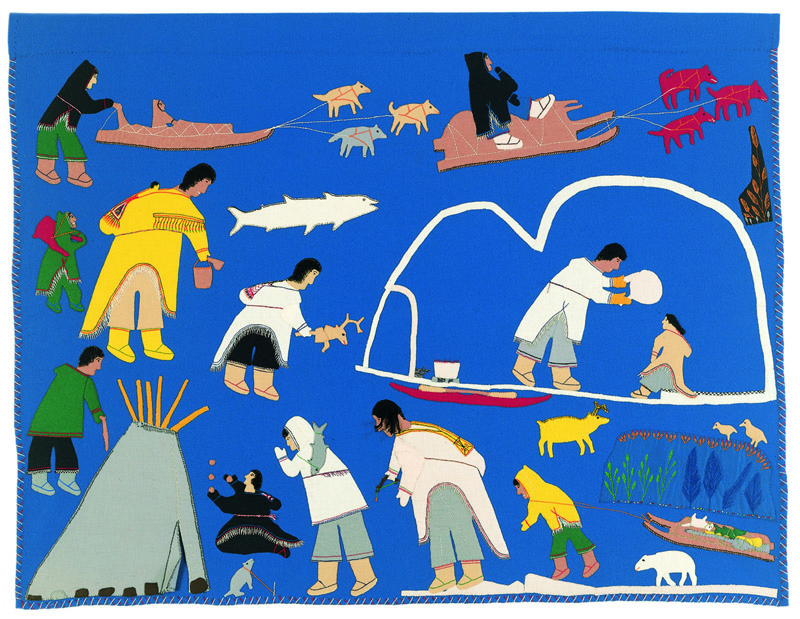
Martha Tiktaq Anautalik
Life on the Land, 1980, wool felt & embroidery floss on wool duffel, 38.5 x 49.5 in.
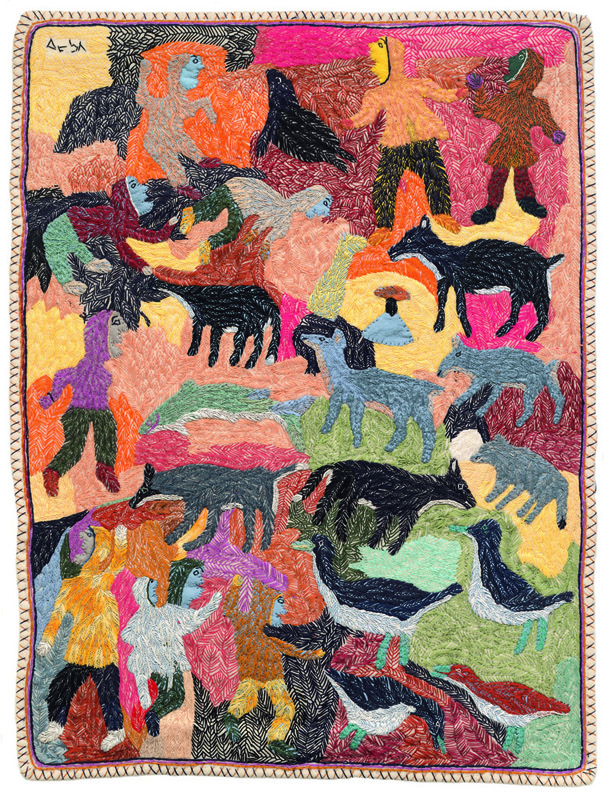
Elizabeth Angrnaqquaq
Animals and People, 2000, wool felt & embroidery floss on wool duffel, 36.5 x 27.5 in.
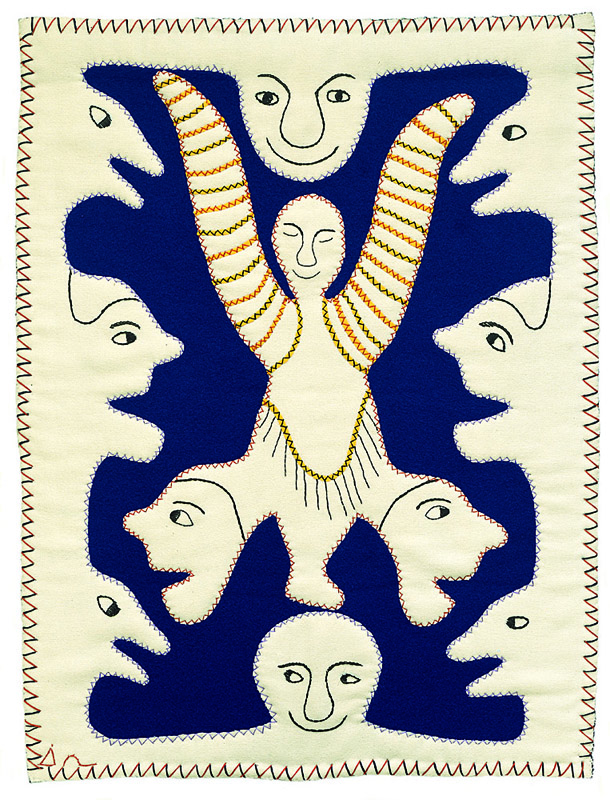
Irene Avaalaaqiaq Tiktaalaaq
Shaman Performing, 1999, wool felt & embroidery floss on wool duffel, 38 x 29.5 in.

Irene Avaalaaqiaq Tiktaalaaq
Bird Spirits, 2001, wool felt & embroidery floss on wool duffel, 38.5 x 57.5 in.
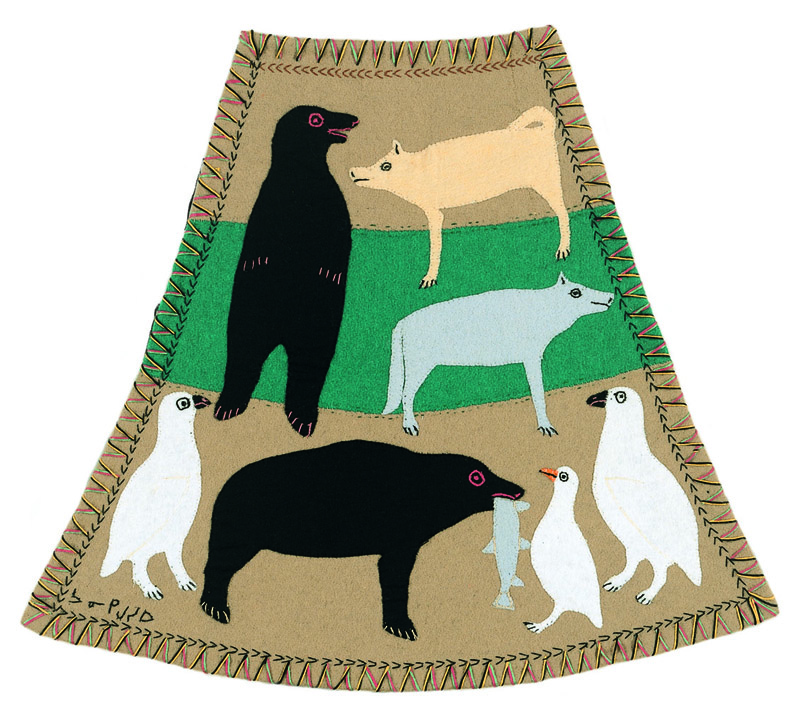
Janet Kigusiuq
Other Animals Trying to Steal Fish from Inland Grizzly, 1980, wool felt & embroidery floss on wool duffel, 18.5 x 16 in.
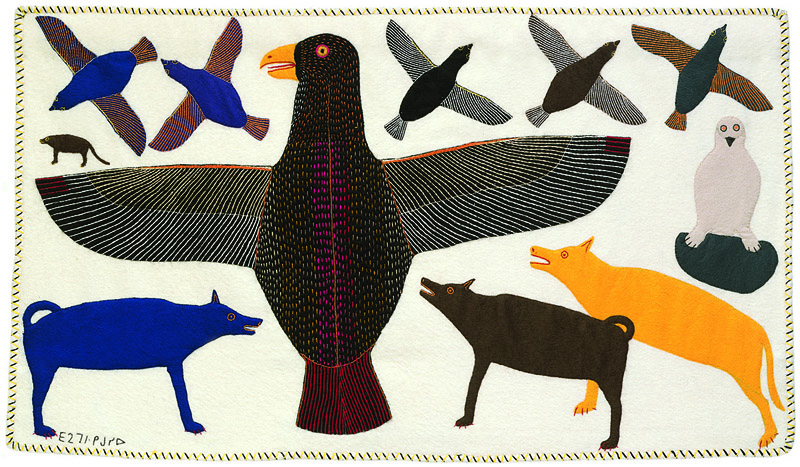
Janet Kigusiuq
Scaring Eagle off from Prey, 1999, wool felt & embroidery floss on wool duffel, 28 x 48 in.
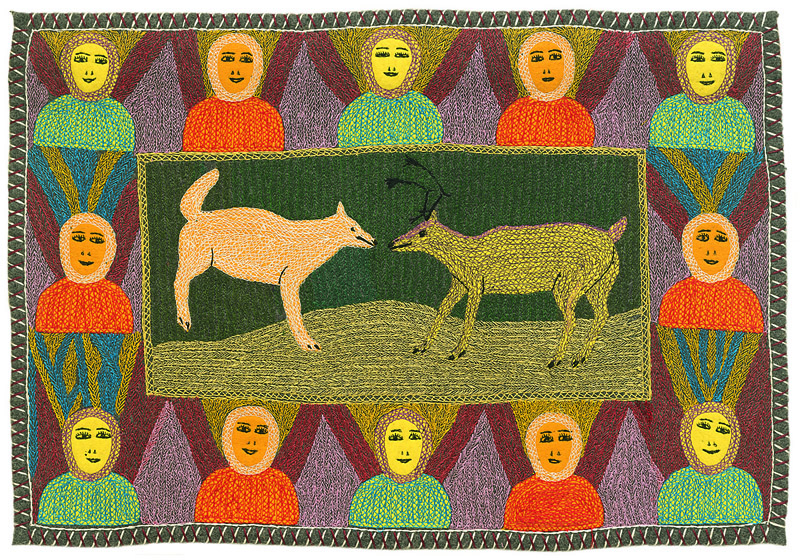
Mary Mariq Kuutsiq
Caribou and Dog, 2000, wool felt & embroidery floss on wool duffel, 19.25 x 27.75 in.

Victoria Mamnguqsualuk
Woman with Too Many Children, 2001, wool felt & embroidery floss on wool duffel, 51 x 57.5 in.

Victoria Mamnguqsualuk
Animal/Human Composition, 2002, wool felt & embroidery floss on wool duffel, 22 x 58 in.
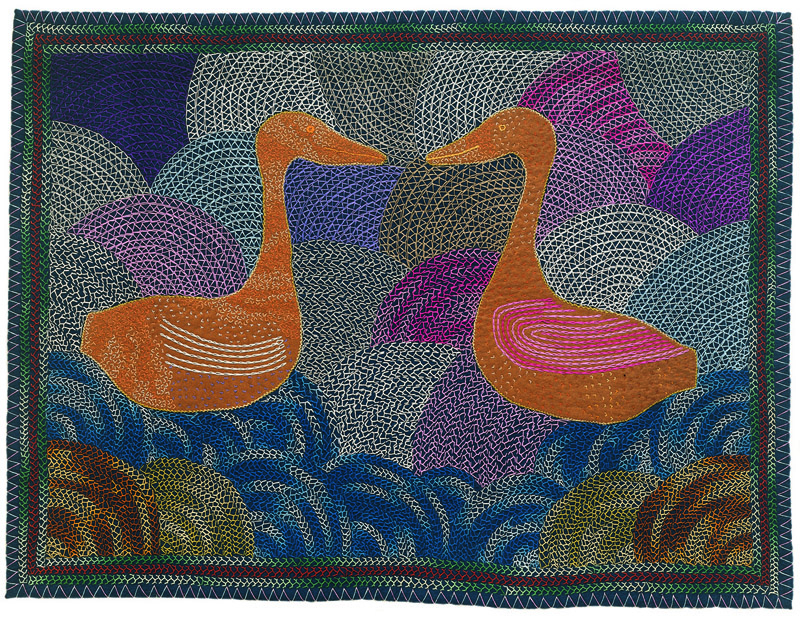
Ruth Qaulluaryuk Nuilaalik
Birds on Baker Lake, 2002, wool felt & embroidery floss on wool duffel, 27.75 x 37 in.
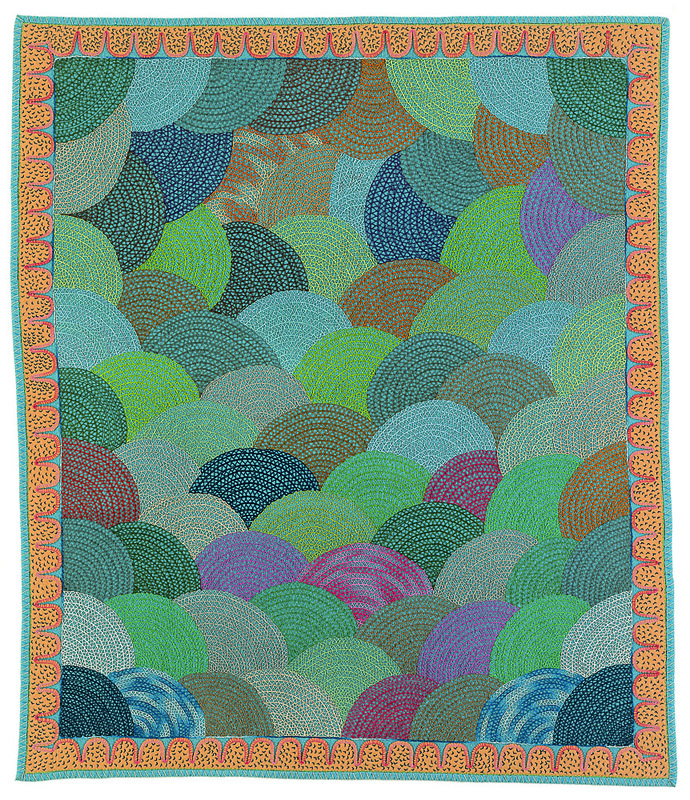
Ruth Qaulluaryuk Nuilaalik
Landscape, 2001, wool felt & embroidery floss on wool duffel, 59 x 47 in.
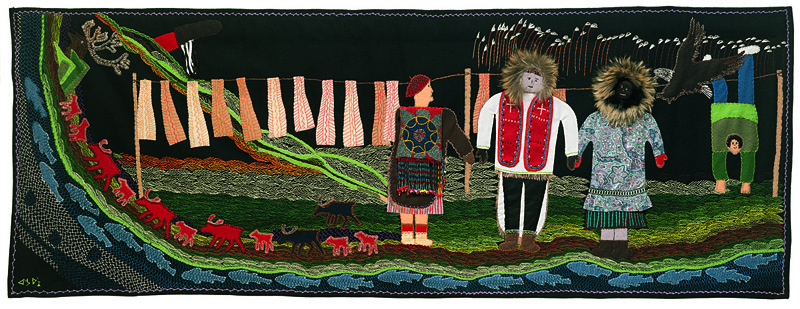
Janet Nungnik
Thelon River, 2000, wool felt, embroidery floss, beads, caribou fur, hide & cotton on wool duffel, 27.5 x 77.5 in.

Janet Nungnik
Airing Hudson Bay Blanket, 2001, wool felt & embroidery floss on wool duffel, 17.5 x 28.25 in.
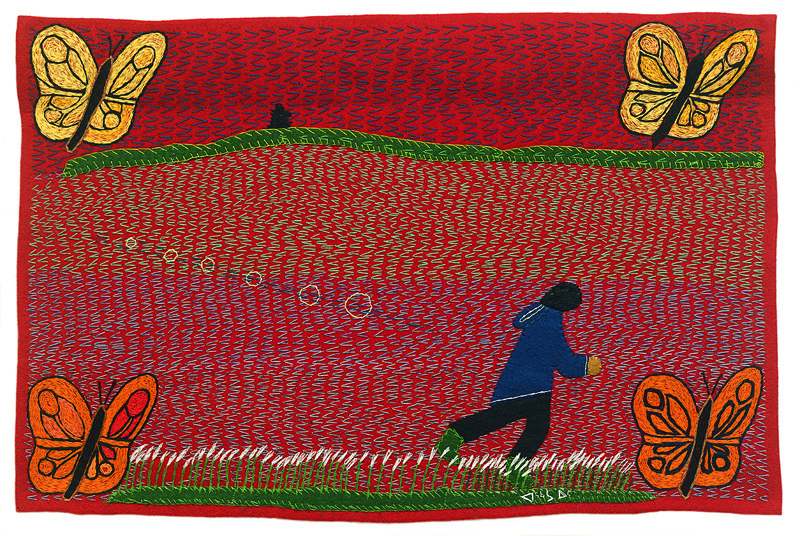
Janet Nungnik
Boy Skipping Stones on Baker Lake, 2001, wool felt & embroidery floss on wool duffel, 18.5 x 28 in.
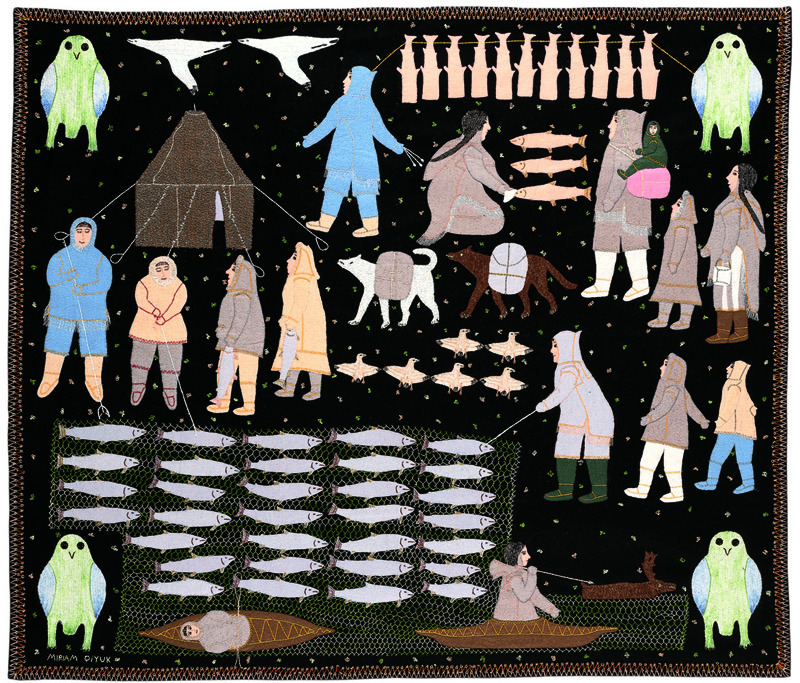
Miriam Nanurluk Qiyuk
Summer Fishing Camp, 2001, wool felt & embroidery floss on wool duffel, 50 x 57.5 in.
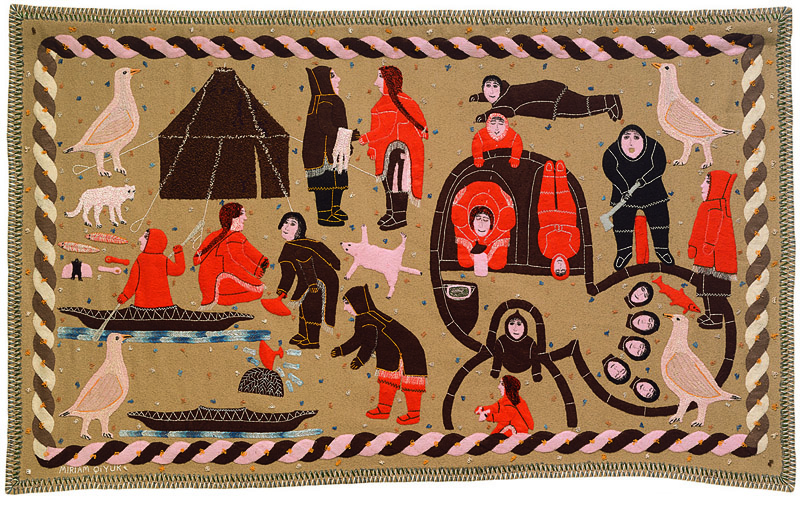
Miriam Nanurluk Qiyuk
Kivioq Legend, 2001, wool felt & embroidery floss on wool duffel, 35 x 57.5 in.
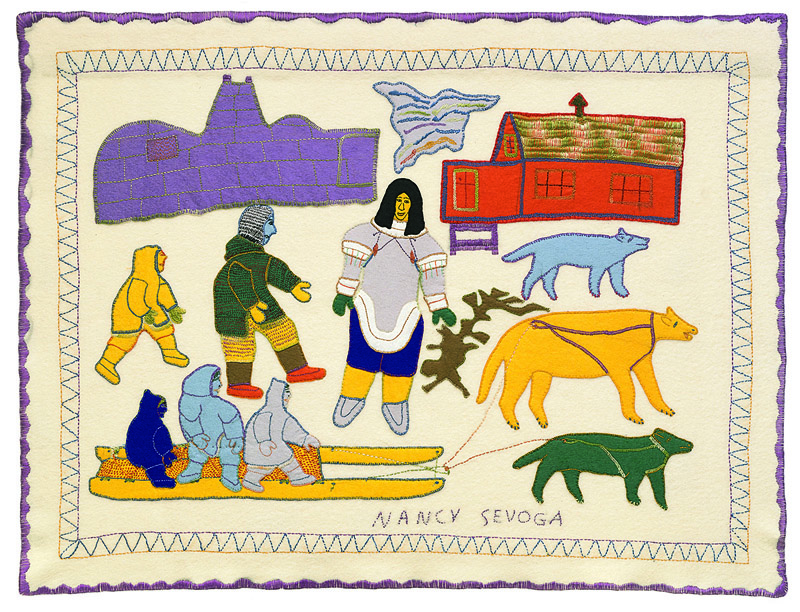
Nancy Kangeryuaq Sevoga
Coming to the Hudson Bay Trading Post and Igloo Hotel, 1999, wool felt & embroidery floss on wool cloth, 29.5 x 38.5 in.
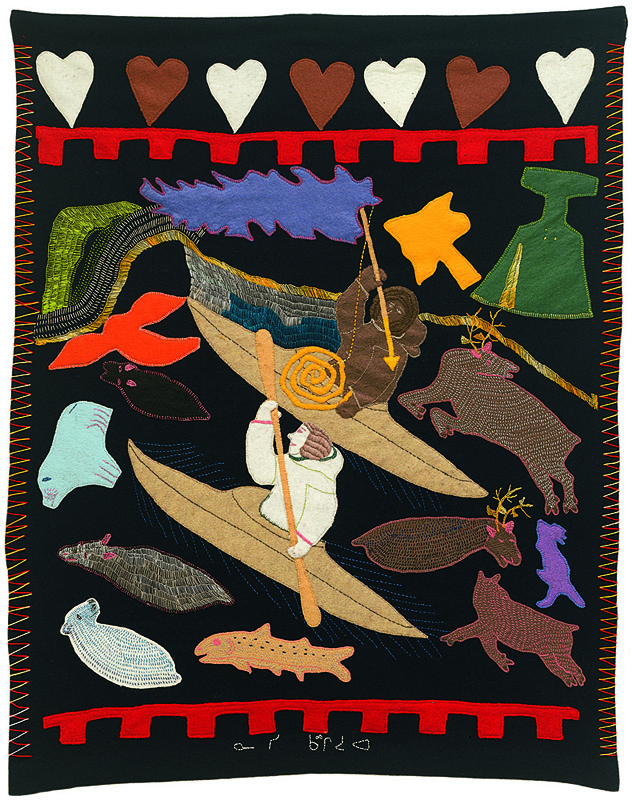
Nancy Kangeryuaq Sevoga
Kayak Hunters, 2002, wool felt & embroidery floss on wool duffel, 37 x 29 in.

Nancy Kangeryuaq Sevoga
Traditional Baker Lake Clothing, 2001, wool felt, embroidery floss & beads on wool duffel, 52 x 29.5 in.
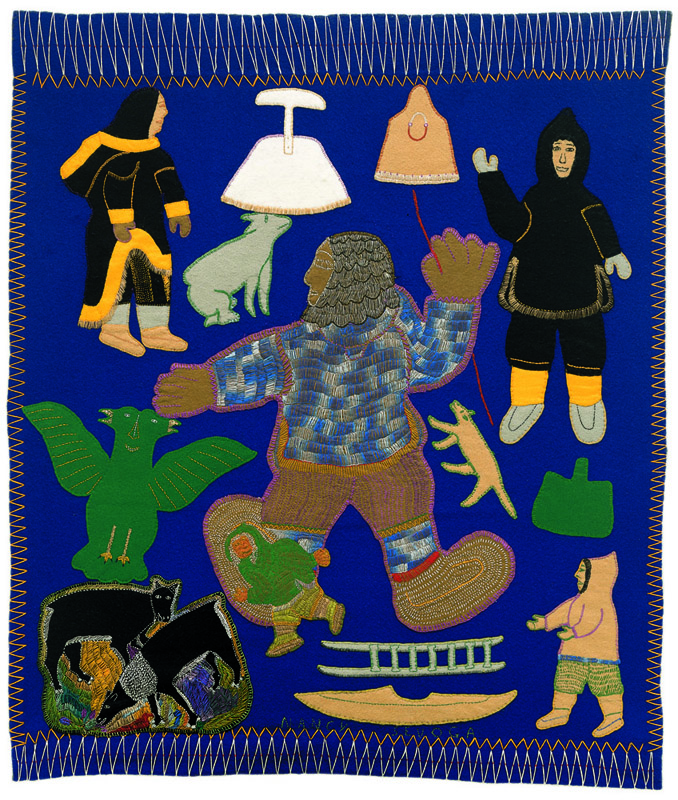
Nancy Kangeryuaq Sevoga
Legend of the Giant Who Stole Children, 2000, wool felt & embroidery floss on wool duffel, 39 x 33.5 in.
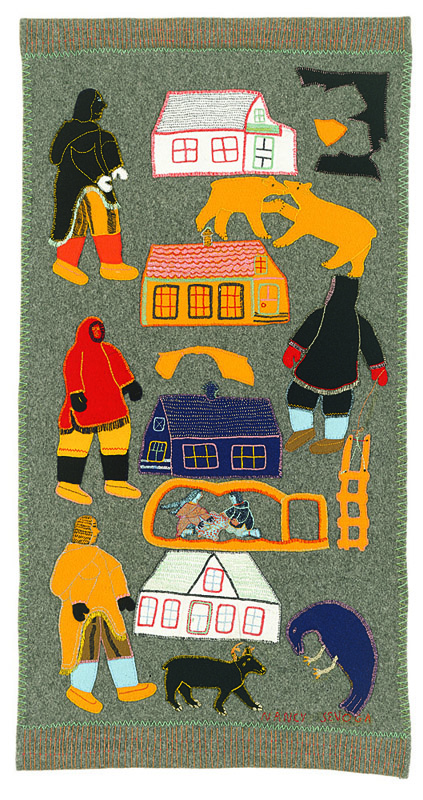
Nancy Kangeryuaq Sevoga
Baker Lake as it is Today, 1999, wool felt & embroidery floss on wool duffel, 48.5 x 25 in.
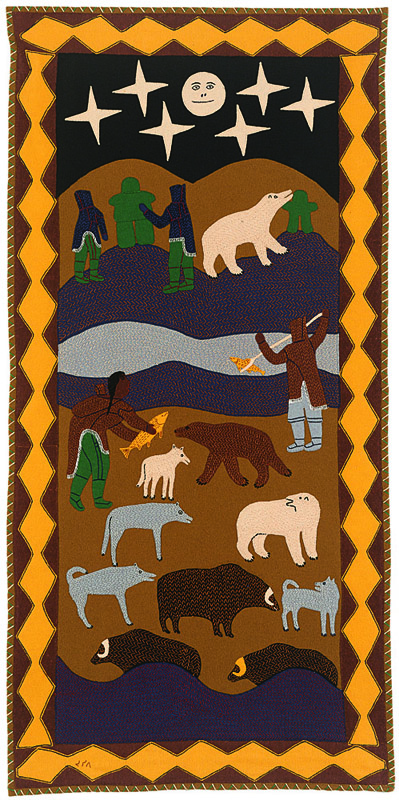
Mary Yuusipik Singaqti
Night on the Land, 1980, wool felt & embroidery floss on wool duffel, 55 x 27 in.

Mary Yuusipik Singaqti
Surviving on the Land, 2001, wool felt & embroidery floss on wool duffel, 52 x 59 in.

